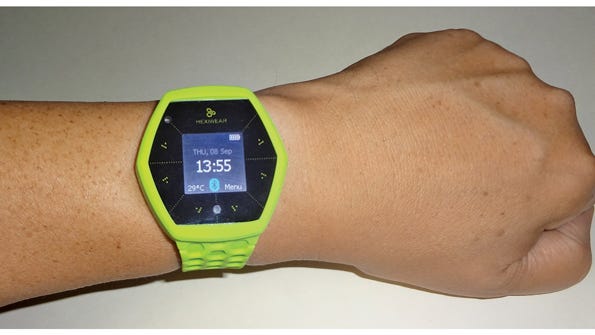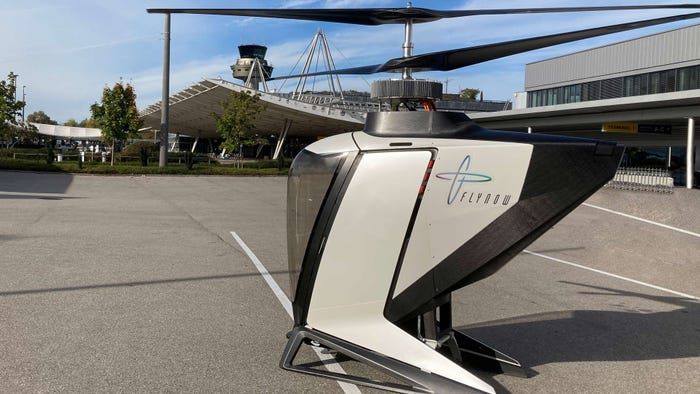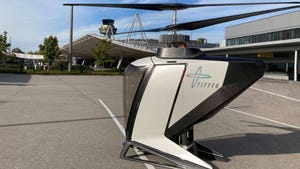Module Targets Rapid IoT DevelopmentModule Targets Rapid IoT Development
Compact embedded systems can be implemented using a range of modules and boards designed for low-power and mobile applications.
September 19, 2016

By William Wong
As development platforms shrink to match end-product portability, the challenge intensifies to create a compact hardware platform for a proof of concept and then turn it into a final product. One of the latest platforms in this arena is Hexiwear (Fig. 1), which comes from a collaborative effort between NXP and MikroElektronika.

1. The Hexiwear module can fit into a wristband. The heart-rate sensor is on the back of the module.
The Hexiwear module is an IoT platform that can be used as a mobile sensor or even a smartwatch-type device, although it’s not designed to take on the likes of an Apple Watch or an Android Wear watch. It does have Bluetooth Low Energy and 802.15.4 connectivity, as well as its own battery that’s charged by the Micro USB connection.
The platform is an open-source hardware and software design based on a 120-MHz, 32-bit Kinetis K64 chip with an ARM Cortex-M4. It has 256 kB of SRAM and 1 MB of flash storage. Wireless support is via a dedicated Kinetis KW4x based on a Cortex-M0+.
The peripheral sensor suite is impressive, including an NXP FXOS8700CQ 3D accelerometer and 3D magnetometer, an NXP FXAS21002 3-axis digital gyroscope, and an NXP MPL3115A2R1 absolute digital pressure sensor. It also features a light, humidity, and temperature sensor plus a heart-rate monitor. The latter is designed for use when the module is installed in the wristband, which comes in a number of colors.

2. The Hexiwear module plugs into the breakout board, providing access to an SD card slot and
three expansion sockets.
The 1.1-in. OLED display is surrounded by capacitive touch sensors; hence, the wide bezel. There’s a haptic feedback mechanism as well. A header on the rear of the module provides expansion options.
It’s also designed to mate with the breakout board (Fig. 2), which adds an SD card slot and three MikroElektronika Click Board sockets. These can accept a range of modules from additional wireless interface to relays and motor-control boards. The module (Fig. 3) is compact and easily removed from its case, allowing it to be incorporated into other devices.
The module comes with a built-in application that links to the Hexiwear app running on Apple and Android platforms. This, in turn, can be linked to the WolkAbout WolkSense cloud support. The WolkAbout Smart IoT Cloud includes data-analytics support for big data plus data visualization and reporting tools. Of course, it’s integrated with smartphone and tablet apps in addition to app-development tools.
The system software can be replaced by applications developed on the Kinetis Design Studio, an Eclipse-based IDE that supports the Kinetis Software Development Kit (SDK). A range of third-party development platforms are available, too, from companies such asKeil, IAR, Somnium, and Green Hills Software. The platform is also supported by ARM’s mbed (see “ARM Continues to Enhance mbed”). The design of custom enclosures can be done using Autodesk’s Fusion 360.
Platforms like Hexiwear don’t address every mobile or IoT application, but they do engage with enough to be very interesting to developers. Most, like Hexiwear, employ components that are readily available, even in small quantities, versus other platforms like Raspberry Pi. This can become a critical factor when turning a prototype into a product.

3. The front (a) module has connections for the OLED display
and touch panel that mount on top. The bottom (b) has the
expansion connector, battery, and heart-rate sensor in the middle.
This article was originally published in our sister publication Electronic Design.
You May Also Like
.jpg?width=700&auto=webp&quality=80&disable=upscale)





